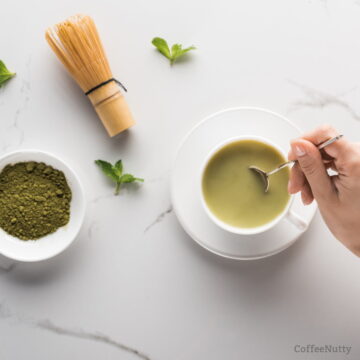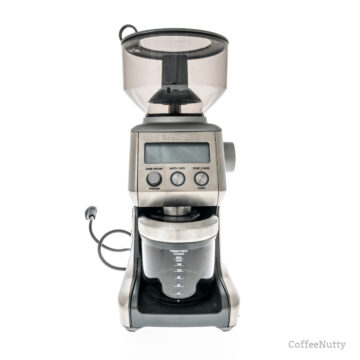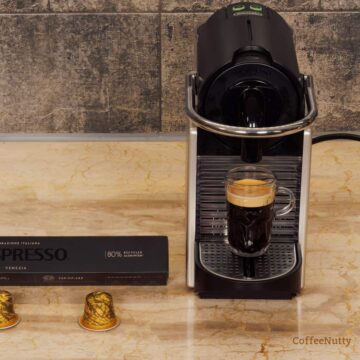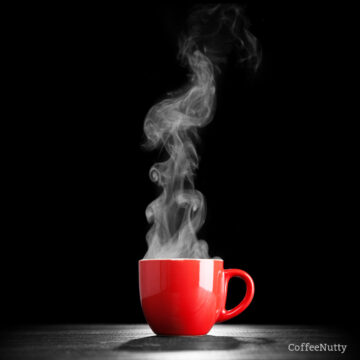If you are a coffee drinker, you are likely aware that there are several different ways to prepare coffee. While most people are familiar with filtered coffee, as it is the most commonly used preparation method, coffee is also available in unfiltered forms. If you are interested in trying a unique style of coffee, you should be aware of the difference between filtered and unfiltered coffee.
Filtered coffee is typically any coffee product that is prepared using a paper filter that catches oils and coffee debris. Unfiltered coffee does not use a filter and will often be prepared by putting coffee grounds directly into water. Unfiltered coffee may also be run through a metal filter, which allows oils to pass through.
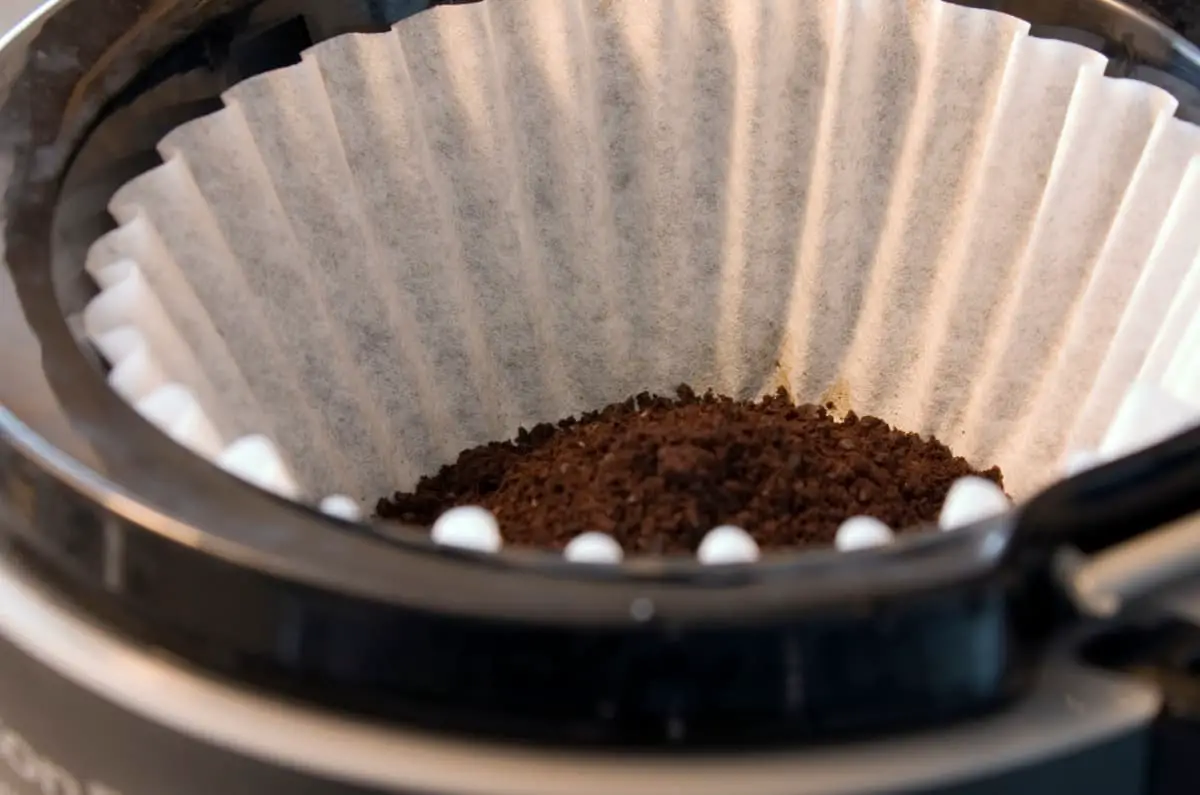
Filtered coffee comes in several different forms, including drip, single serving, and pour-over. Unfiltered coffee doesn’t have as diverse options for preparation, but one style you may find is Turkish coffee, which is available in some cafes or restaurants.
Filtered Coffee Brewing Methods
There are a range of different methods for filtering coffee, each offering different benefits and flavor profiles. Here are a few:
Pour Over
Pour-over coffee is one of the most basic ways to prepare coffee. It requires little equipment and can be done anywhere you have access to water, a heating source, and a vessel for hot boiling water. In order to create a pour-over coffee, you need to place a paper filter over a cup and fill the cup with coffee grounds.
Once these pieces are in place, you pour a slow stream of hot water over the grounds and through the filter. If done at the correct pace, the result is a delicate and delicious cup of coffee.
Pour-over coffee is not always the best option, as the results will be different from cup to cup, hence why many cafes rely on machines that can maintain a certain level of speed and consistency.
Drip Coffee
Drip coffee has consistently been the most frequently used coffee preparation method used in the United States. It relies on thermally induced pressure to send boiling water up to a spout.
Gravity causes that water to pour out of the spout, onto coffee grounds that are resting in a filter. The boiling water is dispersed evenly across the grounds, allowing them to absorb the flavor before passing through a filter.
Espresso
Espresso is similar to drip coffee, but the method used to produce it causes the coffee to come out in a much thicker state. Espresso is made by forcing highly pressurized boiling water through a net of finely ground and compacted coffee.
Compacting the coffee promotes a more even distribution of water throughout the grounds, allowing for maximum absorption of the flavors. The high pressure allows coffee makers to extract both solid and dissolved coffee grounds, producing a thick, viscous liquid.
Chemex
Chemex coffee makers are hourglass-shaped flasks that have a thin neck. The flask is fitted with a conical filter that is made of bonded paper, making it thicker than typical coffee filters. This filter ensures that little coffee oils enter the finished product, allowing for a cleaner taste than drip coffee.
French Press
The French Press has been considered one of the most efficient means of producing high-quality coffee. In order to produce french pressed coffee, you will need a press pot which can be found online or at a department store.
In the press pot, coffee grounds are soaked and steeped before being strained through a filter using a plunger or press. The coffee that is brewed using this method will maintain many of the oils, caffeine, and antioxidants, allowing for a more pure coffee flavor profile.
Moka Pot
Moka pots are a stovetop coffee maker that uses steam pressure to brew coffee. The pot looks similar to a kettle, but is separated into three sections; the bottom chamber is filled with water, the middle chamber holds a filter and coffee grounds, while the top is where brewed coffee rests.
The moka pot is heated, allowing the steam to rise through the coffee grounds. As the steam rises through the filtered coffee grounds, the brewed coffee rises into the top chamber and waits there, ready for you to drink.
Unfiltered Coffee Brewing
Unfiltered coffee brewing is uncommon in the United States, but it is not impossible to find such products or make them on your own. It may seem strange to drink coffee without filtering out the various oils and coffee particulates, but unfiltered coffee grounds are usually refined until they are incredibly fine, making them easy to mix into boiling water. Although the finished product may be a little grainy, it is still highly enjoyable.
Unfiltered coffee is incredibly popular in Turkey, as the product can be produced without much equipment. The coffee itself is ground using a special technique that does not require a lot of heat, which can be time-consuming, but the coffee grounds it produces are considered to be purer than the grounds used in most filtered preparation methods.
The steps to make unfiltered coffee are simple. They include:
- Place your unfiltered coffee grounds into a cup
- Boil water in a kettle
- Pour the water into your cup
- Stir the mix to blend the coffee thoroughly
- Add any desired flavoring such as milk or sugar
- Enjoy!
Do Coffee Beans Make A Difference?
If you are drinking unfiltered or filtered coffee, the type of coffee beans you choose to use may impact the flavor of your beverage. Unfiltered coffee doesn’t remove any of the oils or coffee particles; therefore, you are better off using lighter or medium roast blends. This way, you will not have an overpowering coffee flavor when you mix your grounds with water.
Filtered coffee preparation methods can be used with any type of coffee bean, and it is up to you to choose your preferred bean. Although brewing methods that involve high concentration of coffee may be better suited for lighter roast coffee blends, as this way, you won’t have overwhelming flavor. Try out a few different brewing methods with a variety of beans to determine which is your preference.
Unfiltered Coffee vs. Filtered Coffee: Which Is Healthier?
According to Today.com, coffee has been known to influence cholesterol levels. Compounds in unfiltered coffee called diterpenes can raise bad cholesterol levels. Filtered coffee, on the other hand, is believed to have a positive impact on health, reducing cardiovascular events. Although, people who have adverse heart health may be better off avoiding coffee altogether.
How Instant Coffee Is Made
Instant coffee is prepared similarly to unfiltered coffee, but the method of production is entirely different. Rather than grinding coffee into a fine state, instant coffee can be produced in two different ways.
Traditional Method
The traditional method for preparing instant coffee involves spraying a fine mist of brewed coffee through a hot, dry air chamber. After their journey through the chamber, the coffee droplets dry and are then packaged. These dry bits of coffee can be added to water and consumed immediately.
Freeze-drying Method
Freeze-dried instant coffee is made by forcing frozen coffee to vaporize while skipping the liquid stage. This process is called chemical sublimation. The finished product is shelf-stable and can be mixed with water and consumed immediately.
Both methods of instant coffee preparation can negatively impact the flavor and caffeine-content of the finished coffee, so fresh brewing methods are normally preferred.
Unfiltered Coffee Vs Filtered Coffee
While filtered coffee offers greater versatility, unfiltered coffee is simple to make and highly flavorful. Which one is better is a matter of preference for the consumer; therefore it may be a good idea to try both before deciding which fits your preference.
RELATED:

